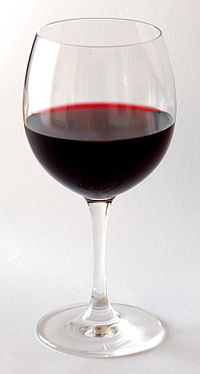
Photo from wikipedia
Abstract Most of the bottles of wine consumed in the world are sealed with cylindrical stoppers. The mechanical behaviour of natural cork stoppers, micro-agglomerated cork stoppers and co-extruded synthetic closures… Click to show full abstract
Abstract Most of the bottles of wine consumed in the world are sealed with cylindrical stoppers. The mechanical behaviour of natural cork stoppers, micro-agglomerated cork stoppers and co-extruded synthetic closures were compared through different tests which simulate the bottling operation, the beginning of the sealing period and the extraction process. Our results show that cork percentage per se provides insufficient information on the mechanical behaviour of a cork-based stopper. Cork percentage together with stopper density is a better indicator of the mechanical behaviour of a micro-agglomerated cork stopper, and that mechanical behavior depends more on cork content than on binder content. As far as the authors are aware, this is the first study based on experimental data aimed at determining the percentage of cork that should be present in a cork-based stopper to achieve a cork-like behavior.
Journal Title: Food Packaging and Shelf Life
Year Published: 2018
Link to full text (if available)
Share on Social Media: Sign Up to like & get
recommendations!